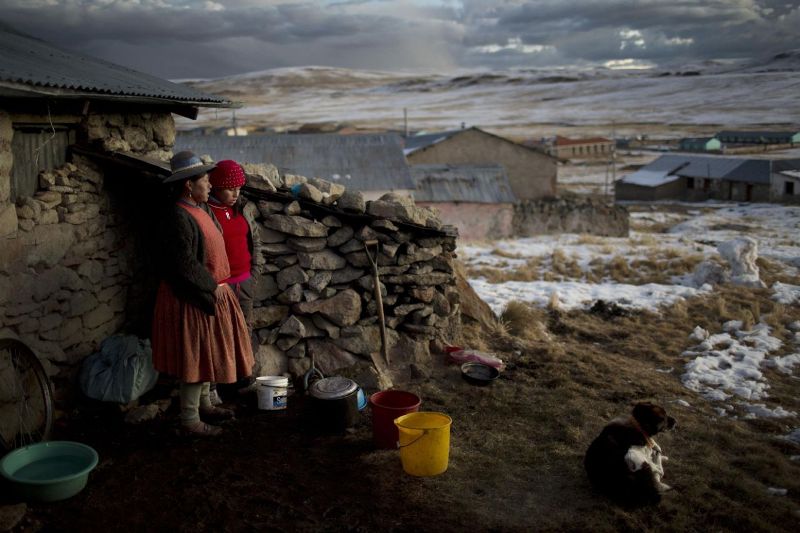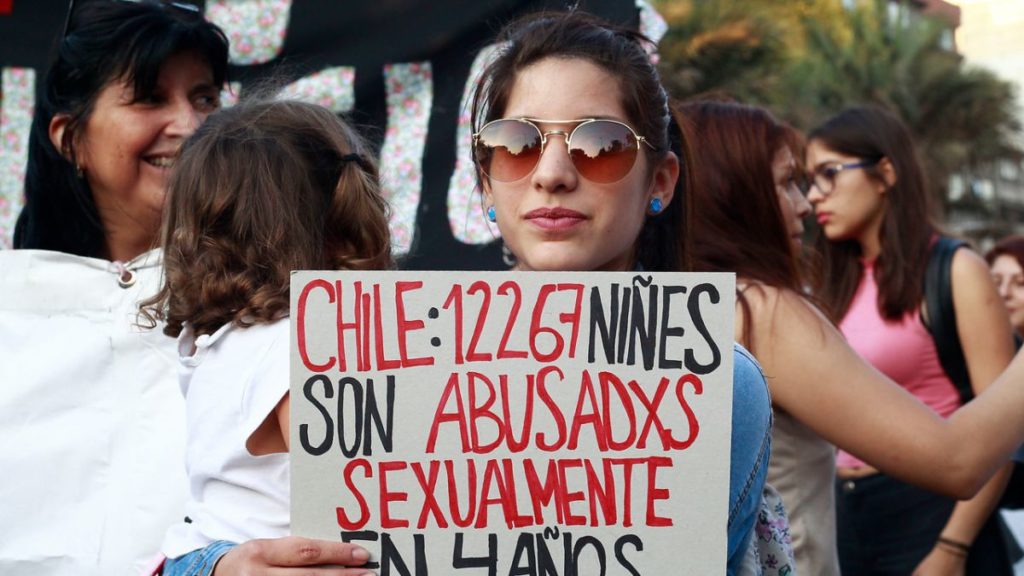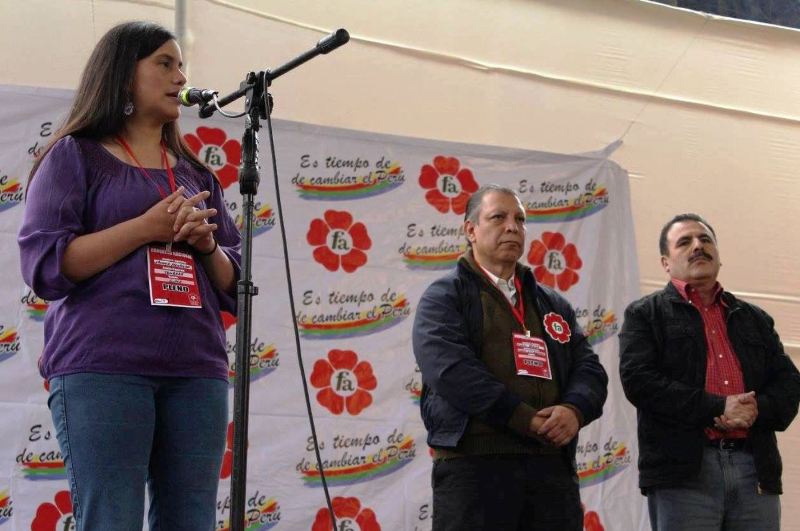At least 105 people have died in southern Peru this winter. While that is tragic, it is hardly news. Children and elderly residents die by the dozen every year.
Many of these deaths are preventable. Families live in huts made of rock and mud. While the region is racked with poverty, modest investments in building materials and training could save the lives of those most at risk from respiratory illnesses and other threats posed by the cold every year.
According to government figures, Peru’s lowest temperature on record came in the El Collao province of Puno, which registered minus 18 degrees Fahrenheit in 1973. At the universities where I teach in Lima, it is difficult for students to understand the gravity of the problem because they do not feel the cold in Puno.
Peru’s national building code does not take into account the cold climate in setting insulation standards. Builders in Lima have long ignored climates other than the coast, where we only care about earthquakes. It is time to take a more nuanced view toward construction to consider climate as well.
Southern Peru has an excellent renewable resource in solar radiation. Results from thermal simulations show that strategically using transparent construction materials can capture heat from the sun, which is abundant in the coldest season.
But harnessing the sun’s energy to keep warm all night long will require better construction methods, specifically in the joints between walls and doors or windows as well as reformulating the way roofs are built. Finding the best solution requires experimenting with different construction methods, and then training the local builders and introducing new materials.
And of course, the economic reality of an area of extreme poverty would require outside investment and government aid.
Solar
The sun, the only great advantage of the region’s climate, is not being leveraged in the Andean highlands. In fact, traditional architecture protects residents from the sun. That must change.
Different organizations around the world have already introduced innovations with transparent materials, improving walls and roofs to create airtight green houses and even thermal panels for hot water. These proven innovations should be implemented in southern Peru.
When hearing “transparent materials,” many people may think of clear plastic films or even glass. But tarps and windows come with the obvious disadvantage of being fragile – they break easily. While strategically located sky windows could be effective, more durable transparent materials include corrugated plastic sheets, polycarbonate sheets and alveolar polycarbonate sheets.
Insulation
Insulation materials like mud, hay and reeds in the Andes Mountains are still valid for the design of houses. Unfortunately they are currently made by hand and not sustainable in time. Rain and snow degrades these organic materials in just one or two years.
In my research I have found that people in southern Peru use corrugated iron sheets for roofs because they are easy and durable, but metal is obviously not ideal for extremely cold temperatures. Manufacturing durable insulation panels could make a noticeable difference in the winters, but this requires training.
Insulation theory aims to avoid the loss of thermal energy, for which small airtight gaps are the most effective. All insulated materials use some kind of air pockets to conserve energy. Double- or even triple-windows are one example. Another is the thermos. Hollow bricks should be used in Peru’s altiplano in conjunction with solid bricks in order to both stock and conserve thermal energy.
In the United States, France and Germany there are many startups trying to introduce organic insulation materials such as animal wools or vegetable fibers into construction. But even those require a semi-industrial approach, producing the materials with heavy machinery to make them durable. And they would still need to be protected from rain and snow with alveolar bricks or corrugated sheets.
Training
“You cannot make mistakes with the cold,” says an old adage among architects in Switzerland, where I earned my masters degree. The cold takes advantage of imperfections created by homemade or small-scale construction.
The people of Puno and the highlands do not employ the rigorous building methods required for the extreme cold. They build in the most economic way their means allow, which is not sufficient for their climate. A semi-industrial approach is necessary to improve the homes in southern Peru.
Unfortunately architects who attempt to change local traditions report that not everybody accepts recommended best practices, even if they can prove the effectiveness of the solution.
Therefore, an education campaign must be put in place. We must teach a real understanding of the cold and new skills about how to deal with it. Otherwise all the other innovations won’t help.
Natural gas
The 2016 election campaign saw promises of bringing natural gas from the fields in Camisea to homes in the south. While cheap natural gas would make electricity and cooking cheaper, could it warm the homes of impoverished families?
Natural gas is a valuable resource, but it would be wasted as heat easily escapes from poorly insulated houses. Before resting our hopes on heating the homes of the south with cheap gas, we must first improve the structural conditions to achieve tightness.
And before allocating a valuable resource like natural gas, we should first take advantage of the solar energy as much as possible to heat walls and rooms for free. We can also use the sun to introduce artificial heating with solar panels, which can also heat water to improve sanitation and hygiene.
Only when building methods have improved and we have leveraged the sun should we complement the solution with natural gas.
Priority
The cost of these innovations will vary depending on the materials used. A profitable model for businesses would be necessary in order for new solutions to be sustainable. But it might make sense for the government to invest in these technologies to kick-start innovation, instead of spending millions on emergency blankets, coats and healthcare every winter after dozens or even hundreds of deaths.
Peru should push the boundaries of innovation in Puno and southern Peru to design housing that can support minus 18 degrees Fahrenheit, as seen in the El Collao province. That can only be achieved by maximizing the existing natural resources. Most importantly, the sun.
Fortunately Peru can draw from existing studies and experiences of the world’s architects. The challenge lies in how to find a market-based model to provide access to new materials as well as training rural populations in new ways to build for the cold.
Richard Valdivia is a professor of architecture at Ricardo Palma University.
Sources
Confort Térmico en Viviendas Altoandinas… un enfoque integral (CARE Peru)
Evaluación experimental de cambios constructivos para lograr confort térmico en una vivienda altoandina del Perú (Universidad Nacional de Ingeniería)
Totora: A Sustainable Insulation Material for the Andean Parts of Peru (University of Minnesota)
L’Isolation Thermique Ecologique (Terre Vivante)
DESARROLLO RURAL EN BASE AL PROGRESO DE LA UNIDAD FAMILIAR CAMPESINA (Alianza en Energía y Ambiente con la Región Andina)
Acondicionamiento Térmico y Lumínico para Edificaciones Rurales (Ministerio de Vivienda, Construcción y Saneamiento)
Santé et qualité de l’environnement interieur dans les bâtiments (Presses Polytechniques et Universitaires Romandes)
Casas Solares (Programa de Empleo y Juventud)
El Frío en la Región de Puno: Proposiciones Sostenibles para el Mejoramiento de la Arquitectura Rural (Richard Valdivia)










